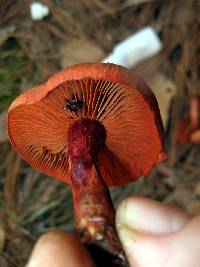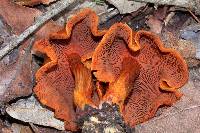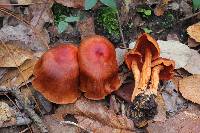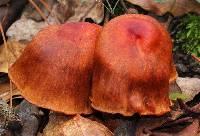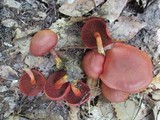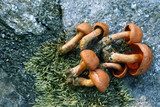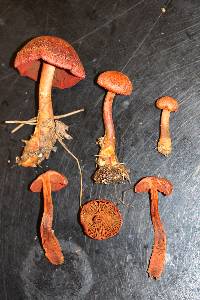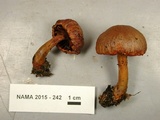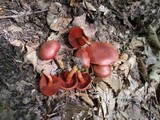
|
|
|
|
Family: Cortinariaceae
|
Niskanen T, Liimatainen K, Ammirati JF, Hughes K. 2013. Cortinarius section Sanguinei in North America. Mycologia, 105(2): 350-351.
Cortinarius harrisonii Ammirati, Niskanen & Liimat. sp. nov. Fig. 2B MycoBank MB800333 Ecology and distribution: In deciduous hardwood and mixed forests, often with Tsuga. August to September. Known only from eastern North America, from Massachusetts into the Appalachian mountain range. |
|
|
|




